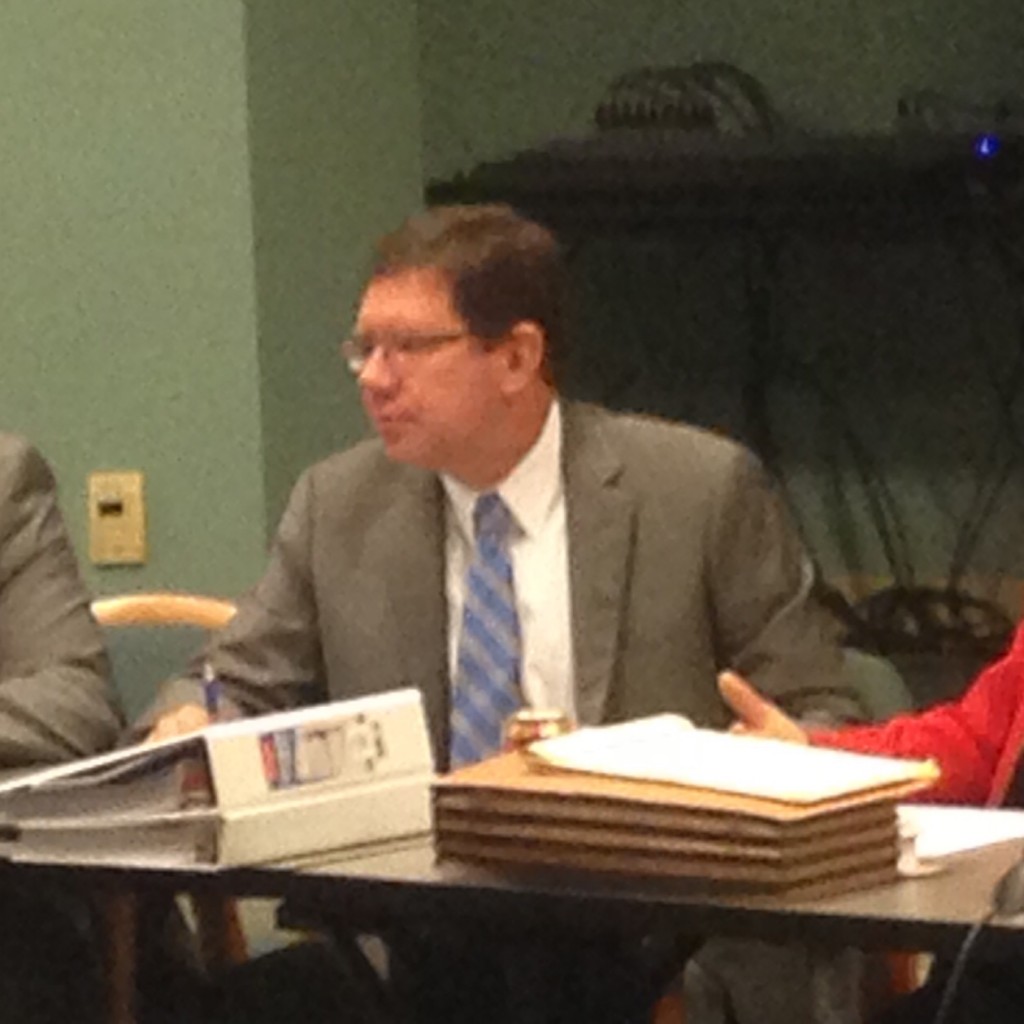
Bill Gulliford celebrated his 72nd birthday by chairing the JEA Agreement meeting, promising, at long last, an extended discussion of the contribution formula, before a vote on it next Tuesday.
The proposal specs: a 10-year agreement, starting October 2016; a contribution floor of $114,187,538; a reset of tax millage to achieve the floor; an annual increase, based on the higher value of millage calculation or CPI increases (up to 1.75 percent); water quality credits; Jacksonville being “held harmless” for increased charges; and JEA contributing an added $25 million for sewer extension and/or septic tank phase-out.
The proposal was hammered out Tuesday, said Gulliford, by himself, Sam Mousa and Mike Weinstein from the Lenny Curry administration, and a few other principals.
“This is the first time most people have seen this,” Gulliford said, “we just dropped it out there,” adding that further discussion would happen next week.
Gulliford urged that JEA find a way to make its future revenue stronger, a contention at odds with JEA’s bearish projections regarding electrical demand given increased efficiency.
“That is absolutely the responsibility of JEA’s board to drive those kind of things,” Gulliford said.
Council President Greg Anderson wondered about variables, such as fluctuations in profit, and the potential introduction of a new product line, such as compressed natural gas.
“If they add a new product line, they’re going to be tested to see if it improves” their finances.
Gulliford urged that should such a thing happens, it would be “absolutely wonderful,” and any lagniappe should go to debt reduction.
Councilman Reggie Brown then addressed JEA CEO Paul McElroy regarding the proposed millage rate floor, to which Hightower opined that “the challenge here is to provide a calculation that is consistent and reliable for all parties … and ultimately for our community to benefit.”
“We’ve lived eight years now … and the actual calculation hasn’t really mattered,” McElroy said.
“One of the challenges of percent of revenue,” McElroy said, is that margins are different based on sectors, from water to CNG.
“As we look at other opportunities, the margins … will be different,” McElroy said, citing solar as a potential example.
Gulliford noted that “conservation puts pressure” on their ability to generate profit, setting up a unique paradox between conserving energy and generating municipal revenue.
McElroy then pivoted a discussion of the difficulty of trying to “hedge the revenue stream,” saying “if you look at this issue in a broader context, you end up with a pretty good hedged position.”
McElroy then noted that prices have not been increased in the last few years, and that the challenge going forward is “flat” revenue.
Councilwoman Lori Boyer then cautioned, regarding new product lines, against setting up a public utility to have competitive advantage against a private business engaged in a new line of business, before noting JEA’s debt issues and capital needs.
Millage contribution was addressed next.
Boyer noted that, while per capita consumption is on the decline, the expansion of the consolidated city of late could drive aggregate demand.
Other issues, Mousa brought up, include costs for streetlights and chilled water.
“I would like to include that street light, traffic signals, water and sewer costs … if there is a rate increase, we see a credit back to us in terms of additional contribution.”
“If this proposal goes further,” Mousa said, he expects further amendments and refinements.
In 1995, he asai, JEA offered discounts on utilities to large customers such as the city when the specter of deregulation loomed.
The discount is “not as much as it was,” Mousa said, given that JEA was given the option of amending that agreement.
During budget, “we determined that they had the right to cancel that discount,” and given that right, “we kept our mouths shut,” Mousa said.
Another potential revenue impact: LED conversion on streetlights, Mousa said, which has a capital outlay combined with decreased usage patterns.
Finally came the septic tank discussion. The $25 million JEA contribution, it was noted by Councilman Reggie Brown, is a “step in the right direction” but it’s “not going to do much,” even when matched by the city’s $25 million match.
Another open question: Would that contribution be phased or rendered in a lump sum?
Boyer cautioned that even if revenue to complete the estimated $300 million of remediation work was there, the manpower may not be.
“It’s not just a drop in the bucket,” Boyer said, citing $50 million as a “significant step forward.”
Mousa noted that a possibility would be to come back to the Capital Improvement committee with a revised plan on this front, with additional pay-go money.
If “environmental related,” Mousa said, money could come from “stormwater utility.”
Even where service has been extended in some areas, Gulliford said, rates of hooking up to city sewer by septic tank users are as low as 40 percent in some areas. People apparently are fee averse.
A solution?
“You don’t have to hook up,” Gulliford said, “but we’re going to bill you” anyway.
Gulliford also noted the expansion in the northern part of the county, beyond JEA sewer service, where developers are installing septic tanks.
His question: Is it a better idea to install sewer lines as buildout happens, in a more cost-effective way than extending sewer after the fact?
Working out the funding for such forward thinking, of course, will be an open question.



